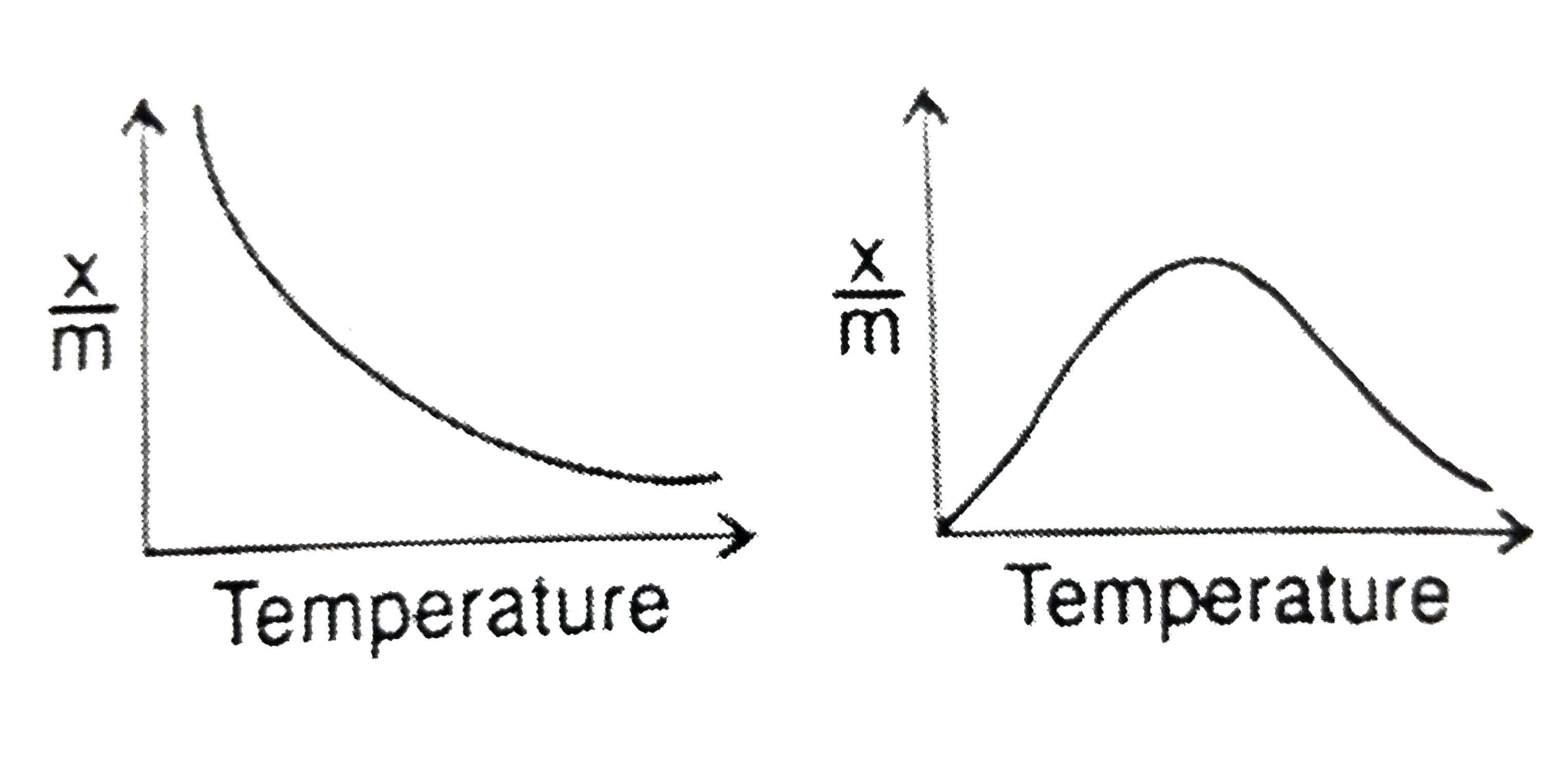What are the factors which influence the adsorption of a gas on a solid?
Video Solution
Text Solution
(i) The nature of the gas (i.e. nature of the adsorbate). The easily liquefiable gases such as HCl, NH3,Cl2 etc. are adsorbed more than the permanent gases such as H2,N2 and O2. The ease with which a gas can be liquefied is primarily determind by its critical termperature. Higher the critical temperature (Tc) of a gas, teh more easily it will be liquefied and, therefore, more readily it will be adsorbed on the solid.
Gas SO2CH4H2Tc330K190K33K
(ii) Nature of adsorbent. The extent of adsorption of a gas depends upon the nature of adsorbent. Activated charcoal (i.e. activated carbon), metal oxides (silica gel and aluminium oxide) and clay can adsorb gases which are easily liquified. Gases such as H2,N2 and O2 are generally adsorbed on finely divided transition metals Ni and Co.
(iii) Activation of adsorbent.
(a) Metallic adsorbents are activated by mechanical rubbing or by subjecting it to some chemical reactions.
(b) To increase the adsorbing power of adsorbents, they are sub-divided into smaller pieces, As a result, the surface area is increased and therefore, the adsorbing power increases.
(iv) Effect of temperature.
Mostly the process of adsorption is exothermic and the reverse process or desorption is endothermic. If the above equilibrium is subjected to increase in temperature, then according to Le-Chaterlier's principle, with increase in temperature, the desorption will be favoured. Physical adsorption decreases continuously with increase in temperature whereas chemisorption increases initially, shows a maximum in the curve and then it decreases continuously.
The initial increase in chemisorption with increase in temperature is because of activation energy required.
This is why the chemical adsorption is also known as "Activated adsorption".
A graph between degree of adsorption (x/m) and temperature 't' at a constant pressure of adsorbate gas is known as adsorption isobar.

(v) Effect of pressure. The expert of adsorption of a gas per unit mass of adsorbent depends upon the pressure of the gas. The variation of expert of adsorption expressed as x/m (where x is the mole of adsorbate and m is the mass of the adsorbent) and the pressure is given as below. A graph between the amount of adsorption and gas pressure keeping the temperature constant is called an adsorption isotherm.
It is clear from the figure that extent of adsorption (x/m) increases with pressure and becomes maximum corresponding to pressure P1 called equilibrium pressure. Since adsorption is a reversible process, the desortion also takes place simultaneouysly. At this pressure (P1) the amount of gas adsorbed becomes equal ot the amount of gas desorbed.

|
Topper's Solved these Questions
- SURFACE CHEMISTRYBook:RESONANCE ENGLISHChapter:SURFACE CHEMISTRYExercise:Section (B)
Explore 4 Videos
- SURFACE CHEMISTRYBook:RESONANCE ENGLISHChapter:SURFACE CHEMISTRYExercise:Section (C)
Explore 7 Videos
- SURFACE CHEMISTRYBook:RESONANCE ENGLISHChapter:SURFACE CHEMISTRYExercise:Solved Problems
Explore 11 Videos
- STRUCTURAL IDENTIFICATIONBook:RESONANCE ENGLISHChapter:STRUCTURAL IDENTIFICATIONExercise:Advanced level Problems (Part-III)
Explore 12 Videos
- TEST PAPERSBook:RESONANCE ENGLISHChapter:TEST PAPERSExercise:FST-3
Explore 30 Videos
Similar Questions
Knowledge Check
The factors which influence growth are
AnutrientsBwater, oxygenClight, temperatureDall of these
How do size of particles of adsorbent, pressure of gas, and prenvailing temperature influence the extent of adsorption of a gas on a solid?
View SolutionName two factors which influence the stability of a complex.
View SolutionName the factors that influence water potential.
View SolutionThe extent of adsorption of a gas on a solid depends on the :
View SolutionExplain what do you understand by evaporation. Discuss the factors which influence the rate of evaporation of a liquid.
View SolutionWrite any two external factors which influence the development of a plant.
View SolutionWhich is not correct regarding the adsorption of a gas on surface of a solid?
View Solution

